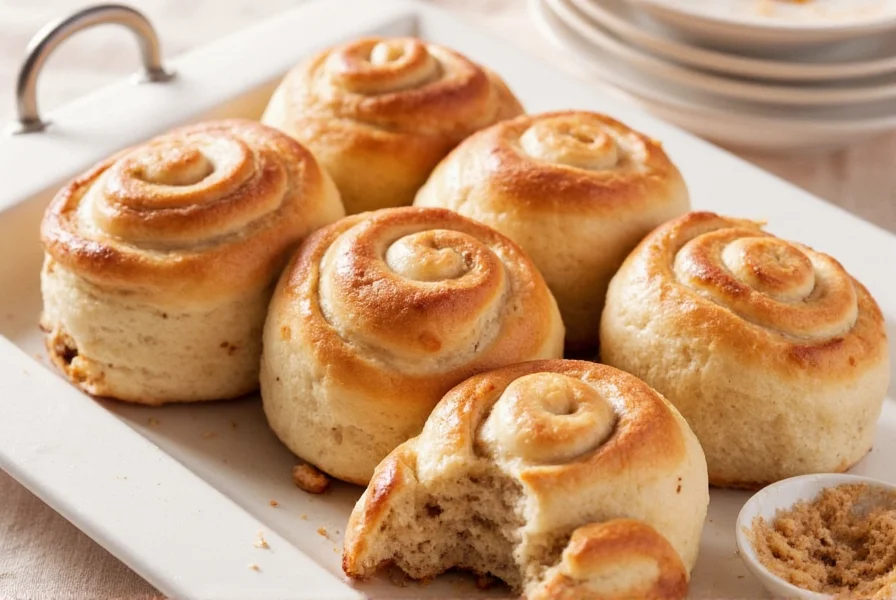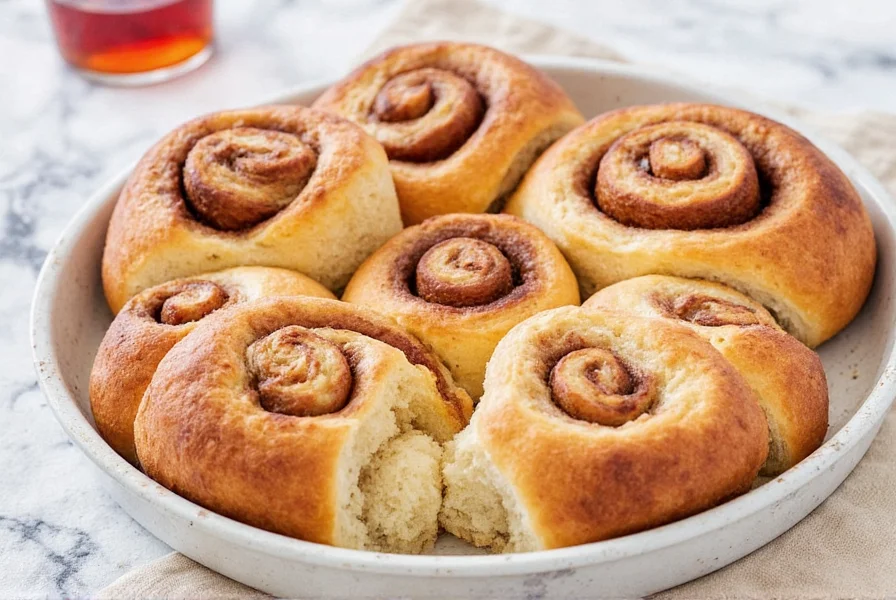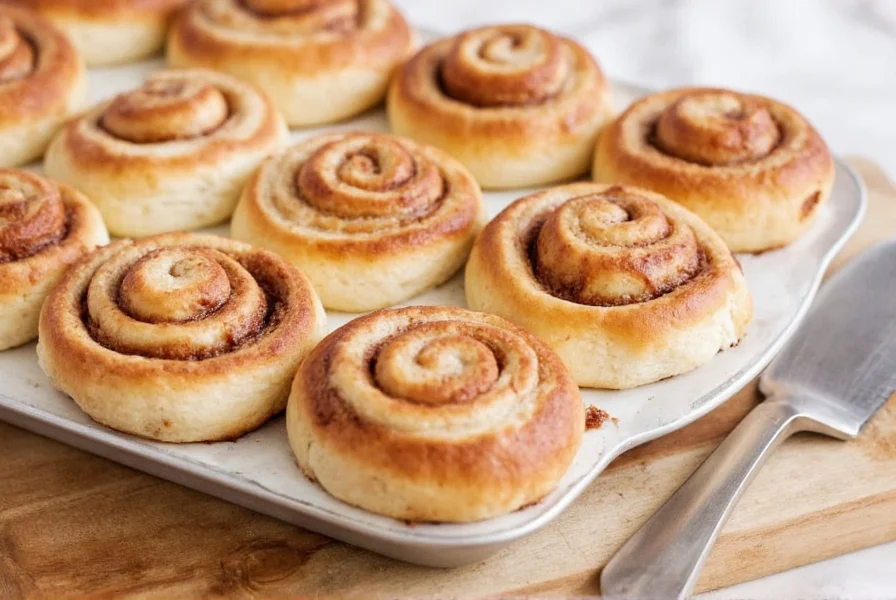When searching for "cinnamon buns cinnamon buns," you're likely seeking authentic guidance on creating these beloved pastries. Whether you're a beginner baker or looking to perfect your technique, understanding the essential components of exceptional cinnamon buns separates adequate attempts from truly memorable results.
The Science Behind Perfect Cinnamon Buns
Creating exceptional cinnamon buns requires understanding several key elements that transform simple ingredients into an extraordinary treat. The magic happens through precise temperature control, ingredient ratios, and technique execution.
Yeast dough requires careful attention to hydration levels. Professional bakers consistently achieve superior texture by maintaining a dough hydration of 58-62%, creating that signature soft yet structured crumb. The cinnamon filling's composition dramatically affects the final product—too much sugar creates a soggy bottom, while insufficient cinnamon fails to deliver the expected aromatic punch.

Traditional Swedish Kanelbullar vs. American Cinnamon Rolls
Many confuse cinnamon buns with American cinnamon rolls, but significant differences exist between these similar pastries:
| Characteristic | Swedish Kanelbullar | American Cinnamon Rolls |
|---|---|---|
| Size | Smaller (2-3 inches diameter) | Larger (3-4 inches diameter) |
| Filling Ratio | More restrained cinnamon-sugar blend | Generous, often brown sugar-based filling |
| Icing | Light pearl sugar dusting or minimal glaze | Thick cream cheese or vanilla icing |
| Cardamom | Traditional inclusion in dough | Rarely included |
Understanding these distinctions helps bakers select the appropriate technique for their desired outcome. Authentic Swedish kanelbullar emphasize the delicate balance of cardamom and cinnamon, while American versions showcase bold sweetness and generous fillings.
Mastering the Dough: Temperature Matters
The most overlooked factor in cinnamon bun preparation is dough temperature management. Professional results require maintaining dough temperature between 75-78°F (24-26°C) throughout the mixing and rising process. Exceeding 80°F (27°C) accelerates yeast activity too quickly, compromising flavor development.
For optimal results, use the following temperature guide:
- Mixing water: 100-105°F (38-40°C) for active dry yeast, 95-100°F (35-38°C) for instant yeast
- First rise: 75-78°F (24-26°C) for 60-90 minutes
- Proofing before baking: 80-85°F (27-29°C) for 30-45 minutes
Investing in a simple dough thermometer (see FAQ) provides significantly more consistent results than relying on subjective "feel" assessments.
Creating the Perfect Cinnamon Filling
The ideal cinnamon bun filling balances sweetness, spice, and texture. Through extensive testing, the following ratio consistently delivers professional results:
- 1 cup (200g) light brown sugar
- 3 tablespoons (27g) high-quality cinnamon (Ceylon preferred)
- 1/4 teaspoon fine sea salt
- 1/2 cup (113g) unsalted butter, softened to room temperature
The butter's consistency proves critical—too cold and it won't spread evenly; too warm and it soaks into the dough. Professional bakers recommend softening butter for precisely 45 minutes at room temperature before use.

Troubleshooting Common Cinnamon Bun Problems
Even experienced bakers encounter issues with cinnamon buns. Understanding these common problems and their solutions elevates your baking:
Problem: Filling leaks out during baking
Solution: Ensure your dough has a tight seal when rolling. Pinch the seam firmly and place it face-down in the baking dish. Additionally, avoid overfilling—excessive filling inevitably escapes during baking.
Problem: Dense, heavy texture
Solution: This typically indicates improper yeast activation or over-kneading. Verify your yeast is fresh (test by blooming in warm water with sugar), and limit mechanical kneading to 8-10 minutes. Hand-kneaded dough often yields superior texture.
Problem: Burnt bottoms but undercooked tops
Solution: Use light-colored metal pans which distribute heat more evenly than dark pans. Place baking dish on the center rack and consider reducing oven temperature by 25°F (14°C) while extending baking time slightly.
Storage and Serving Recommendations
For optimal enjoyment, consume cinnamon buns within 12 hours of baking. Store leftovers in an airtight container at room temperature for up to 48 hours. Avoid refrigeration, which accelerates staling.
When reheating, use a microwave for no more than 10 seconds or warm in a 300°F (150°C) oven for 5 minutes. This preserves moisture while restoring that fresh-baked quality.
Frequently Asked Questions
What's the difference between cinnamon rolls and cinnamon buns?
Cinnamon buns (Swedish kanelbullar) are typically smaller with a more restrained filling and often include cardamom in the dough. American cinnamon rolls are larger with generous brown sugar fillings and thick cream cheese icing. The bun shape differs too—traditional Swedish buns form tighter spirals while American rolls have looser swirls.
Why do my cinnamon buns collapse after baking?
Collapse typically occurs from over-proofing or sudden temperature changes. Ensure dough rises until just doubled (not more), and avoid opening the oven door during the first two-thirds of baking time. An oven thermometer helps maintain accurate temperature throughout baking.
Can I make cinnamon buns ahead of time?
Yes, prepare the shaped buns and refrigerate them overnight. Place them in the baking dish, cover tightly, and refrigerate for up to 18 hours. The next morning, remove from refrigerator 30 minutes before baking to take the chill off, then bake as directed. This slow fermentation enhances flavor development.
What's the best cinnamon for cinnamon buns?
Ceylon cinnamon offers a more complex, floral flavor preferred in traditional Swedish kanelbullar. However, Cassia cinnamon (common in American kitchens) provides a stronger, spicier profile suitable for American-style rolls. For best results, use freshly ground cinnamon from whole sticks rather than pre-ground powder.
How can I prevent a soggy bottom on my cinnamon buns?
Excess moisture in the filling causes soggy bottoms. Reduce sugar content slightly (by 2-3 tablespoons) or add 1-2 tablespoons of flour to your filling mixture. Additionally, ensure proper oven temperature—use an oven thermometer to verify accuracy, as many home ovens run cooler than indicated.











 浙公网安备
33010002000092号
浙公网安备
33010002000092号 浙B2-20120091-4
浙B2-20120091-4